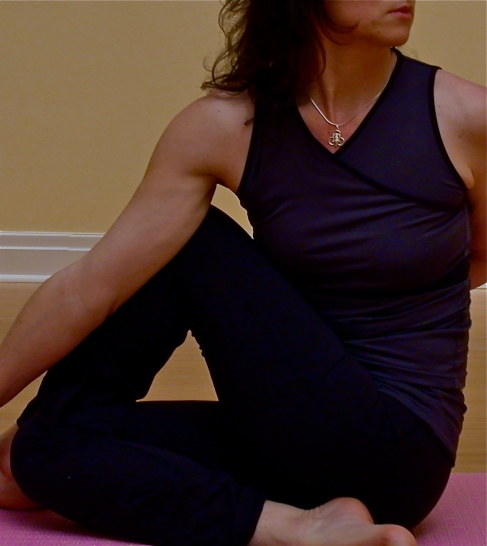Ashtanga yoga and Iyengar yoga have a few things in common:
1. They both come from a very traditional background and were developed from ancient understandings of yoga. They come from students of Krishnamacharya.
2. They have been taught without variation for decades (except maybe variation of teaching styles to accommodate level of student and time spent in class) and there's a silent agreement that the form and process of the practice would not be altered. Meaning that: say the Ashtanga series would not see any variation or addition to the main idea and postures of the practice. Teachers knew way-back-when that yoga was not about them.
A lot of derivatives of these practices of yoga have developed since
because of this particular person's predilections or perhaps that person's understanding of what it takes to bring Yoga (not only asana) to the masses. Whatever the case, these yogas became things like Vinyasa, Jivamukti, Anusara, etc., and the idea of yoga (asana) expanded for better or worse. We see an explosion of these variations because Asana yoga has become very popular. As it becomes more popular with the "Thinspiration" generation it is more about the body and looking good than ever before. Yoga (asana) is changing because the students have changed.
Is There A Place For Traditional Yoga (Asana) Practice?
Being a fairly traditional Ashtanga teacher, the traditional and strict aspect of both styles can turn off newbie and young students, and those who are looking for self-gratification. I find that it is more the aspect of "I want to feel good about myself and look good" which seems to be paramount for most students these days. Precise instruction and conceptualization is not what students are looking for because somehow it makes some students feel "less than". It sounds like criticism and doesn't add the students' narcissistic vanity of "how good I am for being here and doing this".
I have found that these days having a good sweat is not enough. The classes have to appeal to the aspect of personal power. So the more challenging postures in a class the better.
I tend to balance my classes (this is when I teach Stylized Vinyasa) with a style of teaching that challenges and at the same time, I do not introduce postures like some arm balances or things like the splits, etc., unless I see that the majority of students are a little more seasoned and I've taught them for a while and gotten to know them. I have witnessed classes where teachers will put beginners into some poses at risk of injury without any concern and the students just love it. Conversely, I have challenged those who just wanted to really do a restorative class (wasn't even advertised as one but they expected it (?)) and gotten my head chewed off because of it.
Just Teach As The Practice Dictates - Not What Your Or Your Students' Egos Dictate
There really isn't any way to predict students' preferences anyhow, and I have to say that Iyengar and Ashtanga stay steadfast in maintaining the traditional way of teaching as much as possible - and no, I don't mean yelling at your students or calling them names - that is the style of the teacher not the practice, and doesn't come from the deep understanding of the practice. I mean that the process through which the student is guided is as much about the practice as it is about the student.
It Is The Practice That Teaches Not The Teacher
Iyengar must stay as Iyengar as possible. Otherwise it starts to get confused. I have taught Ashtanga for years now and have trained in it extensively. I know the practice beyond the postures just because of the practice itself. That is what I'm teaching. I know some "Ashtanga" teachers who do not practice it and therefore do not know the practice as a practice. They do not know the intricacies of it. These teachers bow to the pressures of students' to add postures which do not belong in the series, make it harder or easier, and let go of the rhythm of the class to appease those who just want to "feel good about myself" to the detriment of Ashtanga. I have had great difficulty teaching Ashtanga after these teachers because students are not being educated in it.
Yoga Is Yoga First And Foremost
But teachers will try anything including risking the injury of their students because for some reason we have decided in this culture that yoga is about popularity and money instead of teaching simply and with humility.
It is the teacher's role to teach their students about the practice beyond the ego-ic need to be appeased and catered to (Spa-like). The most essential teaching for us as teachers and for our students is that: It is not the practice that makes you feel bad nor is it the teacher's responsibility. Feeling good about yourself is an inner conflict and learning that and coming to terms with it is revealed in the practice.
The teacher must teach the practice as it is because the practice is beyond the teacher and the student. It is bigger than them.
Peace!
This post is an extended version of a comment I made to another post by a fellow yogini. Here is the post:
http://yogaspy.com/2013/07/08/can-iyengar-yoga-attract-the-masses/
Thanks Lucy
Christine
This post is an extended version of a comment I made to another post by a fellow yogini. Here is the post:
http://yogaspy.com/2013/07/08/can-iyengar-yoga-attract-the-masses/
Thanks Lucy
Christine

No comments:
Post a Comment